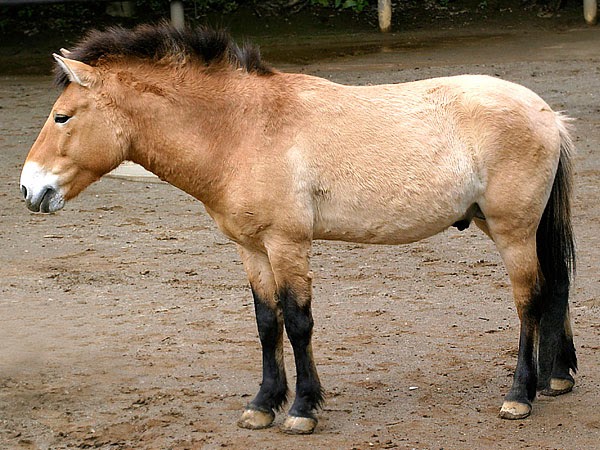When the animated series Pokémon came out during the 90’s, a number of kids during that generation practically spent a lot of time memorizing the different Pokémon by heart. Although these cartoon characters sound too crazy to be true, some Pokémon monsters are actually based on real animals.
Below are 8 Pokémons and the real animals that they’re very likely based on.
Poliwag – Tadpoles
This one’s pretty easy to figure out. Even the swirl on Poliwag’s stomach is found in certain frog species as they transform from tadpole to frog. However the swirl in their stomachs is actually their intestines developing, which doesn’t sound so cute.
Gorebyss - Long-Nosed Chimaera
Although Gorebyss is undoubtedly one of the cutes Pokémon ever drawn, the Long-Nosed Chimaera or Rhinochimaeridae looks more like something that came straight out of your nightmare. They’re deep sea fishes, so you really ever see these come up close to surface of the water. And they have jaws and a row of sharp teeth that don’t really add any friendly appeal to them.
Caterpie - Eastern Tiger Swallowtail Caterpillar
It’s pretty obvious that Caterpies are based on caterpillars, but the eastern tiger swallowtail caterpillar has got to be the real-life basis of this Pokémon. Native to North America, the eastern tiger swallowtail’s caterpillars actually come in a variety of colors, but the green ones look exactly like caterpie.
Luvdisc - Kissing Gourami
A strange fish with a strange name, the kissing gourami is called so because this fish actually has lips. They’re also pink and have heart-shaped bodies, but they’re definitely more aggressive compared to luvdisc. Kissing gouramis “kiss” as a form of sparring.
Mudkip - Axolotl
A lot of people wouldn’t believe that the axolotl is a real animal, until they started showing up on pet stores as exotic pets. Also known as the Mexican salamander, they’re critically endangered in the wild, but are being breed rampantly in captivity.
Magikarp - Yelloweye Rockfish
One of the biggest rockfish or snapper species, they’re commonly seen in the east pacific, all the way up to the waters near Alaska. The older these fishes get, the darker their color turns. Another remarkable thing about them is that they are said to be able to live for more than 100 years.
Krookodile – Gharial
One of the most distinct features of Krookodile is its long and thin snout, which is a bit too over exaggerated when compared to a common crocodile, but fits the gharial’s snout perfectly. Gharial or gavials are crocodilians found in the Indian Subcontinent. They mainly eat fish and can grow to a whopping 20.5 ft. long.
Sandslash - Pangolin
They have the same claw and scales, and even the same eyes. Pangolins are Sandslashes in reality. Different species of the Pangolin are seen all though out south east, south and south west Asia, as well as India and some parts of Africa.
read more "8 Real Animals that most Likely Inspired Pokémons"
Below are 8 Pokémons and the real animals that they’re very likely based on.
Poliwag – Tadpoles
This one’s pretty easy to figure out. Even the swirl on Poliwag’s stomach is found in certain frog species as they transform from tadpole to frog. However the swirl in their stomachs is actually their intestines developing, which doesn’t sound so cute.
Gorebyss - Long-Nosed Chimaera
Although Gorebyss is undoubtedly one of the cutes Pokémon ever drawn, the Long-Nosed Chimaera or Rhinochimaeridae looks more like something that came straight out of your nightmare. They’re deep sea fishes, so you really ever see these come up close to surface of the water. And they have jaws and a row of sharp teeth that don’t really add any friendly appeal to them.
Caterpie - Eastern Tiger Swallowtail Caterpillar
It’s pretty obvious that Caterpies are based on caterpillars, but the eastern tiger swallowtail caterpillar has got to be the real-life basis of this Pokémon. Native to North America, the eastern tiger swallowtail’s caterpillars actually come in a variety of colors, but the green ones look exactly like caterpie.
Luvdisc - Kissing Gourami
A strange fish with a strange name, the kissing gourami is called so because this fish actually has lips. They’re also pink and have heart-shaped bodies, but they’re definitely more aggressive compared to luvdisc. Kissing gouramis “kiss” as a form of sparring.
Mudkip - Axolotl
A lot of people wouldn’t believe that the axolotl is a real animal, until they started showing up on pet stores as exotic pets. Also known as the Mexican salamander, they’re critically endangered in the wild, but are being breed rampantly in captivity.
Magikarp - Yelloweye Rockfish
One of the biggest rockfish or snapper species, they’re commonly seen in the east pacific, all the way up to the waters near Alaska. The older these fishes get, the darker their color turns. Another remarkable thing about them is that they are said to be able to live for more than 100 years.
Krookodile – Gharial
One of the most distinct features of Krookodile is its long and thin snout, which is a bit too over exaggerated when compared to a common crocodile, but fits the gharial’s snout perfectly. Gharial or gavials are crocodilians found in the Indian Subcontinent. They mainly eat fish and can grow to a whopping 20.5 ft. long.
Sandslash - Pangolin
They have the same claw and scales, and even the same eyes. Pangolins are Sandslashes in reality. Different species of the Pangolin are seen all though out south east, south and south west Asia, as well as India and some parts of Africa.





























































